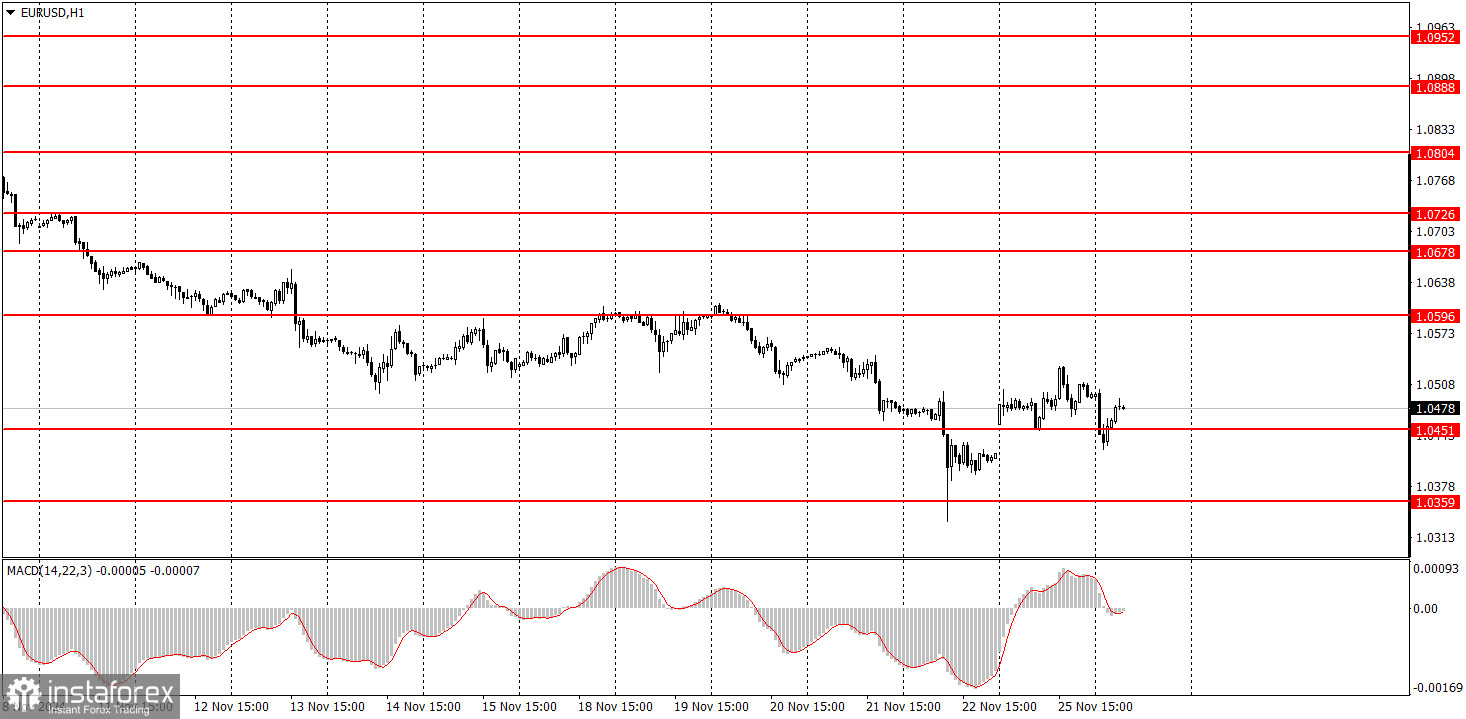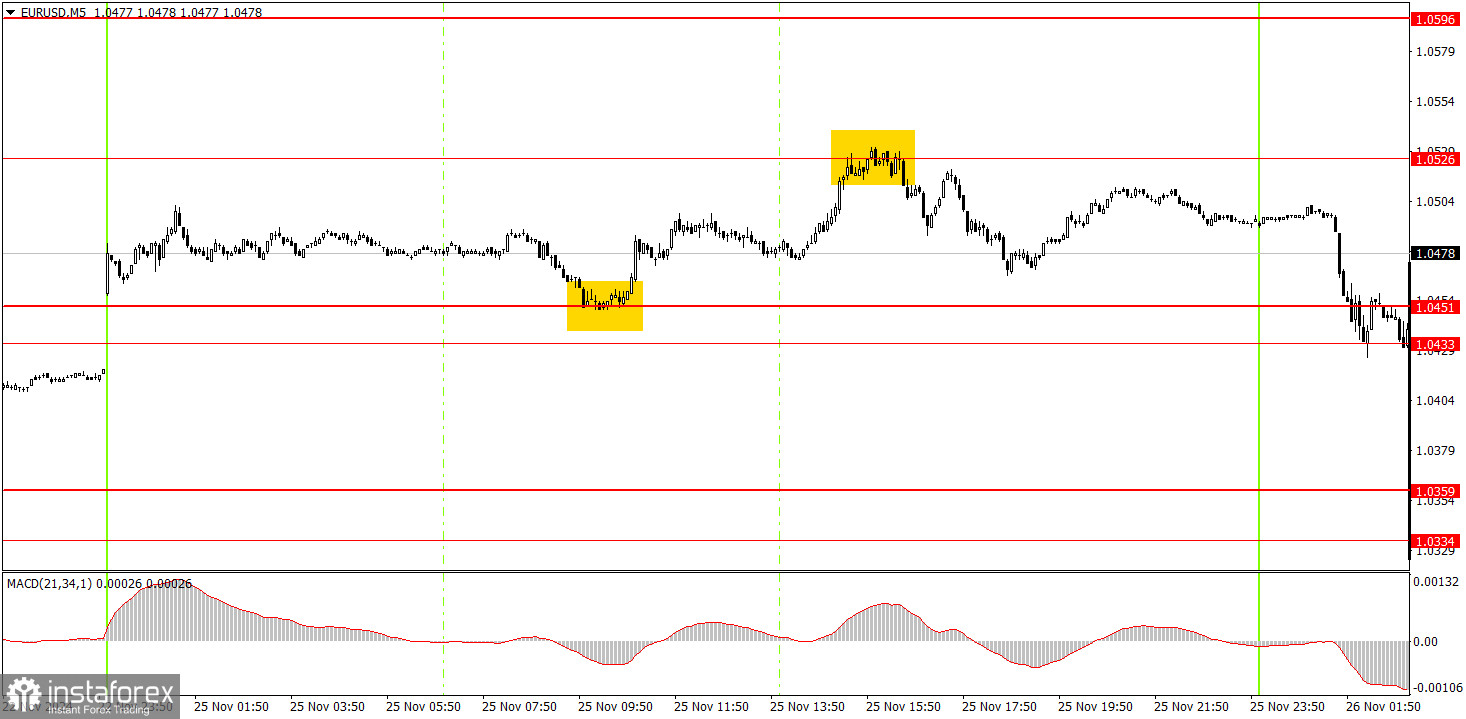Analysis of Monday's Trades
1H Chart of EUR/USD

On Monday, the EUR/USD currency pair made another attempt at a correction. However, as mentioned in previous articles, (1) a gap formed during Monday's market opening, and (2) any fundamental or macroeconomic events did not support the euro's growth. Shortly after we highlighted these points, the price quickly moved to close the gap. While a correction may occur this week, is there any basis to expect significant growth in the euro? From our perspective, no. While U.S. data and European inflation reports could offer temporary support, the euro may only gain about 100 pips. Beyond that, what justifies expecting a return to the 1.1000 level? Hence, our view remains unchanged: strong growth for the euro is unlikely, and any upward movement in the pair is merely a correction.
5M Chart of EUR/USD

Two excellent trading signals were generated on Monday in the 5-minute time frame. First, the price rebounded perfectly from the 1.0451 level, followed by an equally precise rebound from 1.0526. Volatility was not low, providing novice traders with solid opportunities to profit from these signals. In both cases, the nearest target levels were achieved.
Trading Strategy for Tuesday:
In the hourly time frame, the EUR/USD pair is again trying to correct, but the euro can only expect a modest upward movement. In the coming days, an upward retracement is possible, as the price on the weekly time frame has reached the target we mentioned several times—the lower boundary of the horizontal channel. However, this does not guarantee a strong or prolonged rise in the pair.
We believe the pair's upward movement may continue on Tuesday, as the price bounced twice from the 1.0433–1.0451 area. However, it's unlikely the rise will exceed 100 pips.
On the 5-minute time frame, consider the levels 1.0269–1.0277, 1.0334–1.0359, 1.0433–1.0451, 1.0526, 1.0596, 1.0678, 1.0726–1.0733, 1.0797–1.0804, 1.0845–1.0851, 1.0888–1.0896. For Tuesday, no major events are scheduled in the Eurozone or the U.S. In the U.S., the minutes from the latest Federal Reserve meeting will be released, but in our view, they hold no significance for the market.
Core Trading System Rules:
- Signal Strength: The shorter the time it takes for a signal to form (a rebound or breakout), the stronger the signal.
- False Signals: If two or more trades near a level result in false signals, subsequent signals from that level should be ignored.
- Flat Markets: In flat conditions, pairs may generate many false signals or none at all. It's better to stop trading at the first signs of a flat market.
- Trading Hours: Open trades between the start of the European session and the middle of the US session, then manually close all trades.
- MACD Signals: On the hourly timeframe, trade MACD signals only during periods of good volatility and a clear trend confirmed by trendlines or trend channels.
- Close Levels: If two levels are too close (5–20 pips apart), treat them as a support or resistance zone.
- Stop Loss: Set a Stop Loss to breakeven after the price moves 15 pips in the desired direction.
Key Chart Elements:
Support and Resistance Levels: These are target levels for opening or closing positions and can also serve as points for placing Take Profit orders.
Red Lines: Channels or trendlines indicating the current trend and the preferred direction for trading.
MACD Indicator (14,22,3): A histogram and signal line used as a supplementary source of trading signals.
Important Events and Reports: Found in the economic calendar, these can heavily influence price movements. Exercise caution or exit the market during their release to avoid sharp reversals.
Forex trading beginners should remember that not every trade will be profitable. Developing a clear strategy and practicing proper money management are essential for long-term trading success.





















